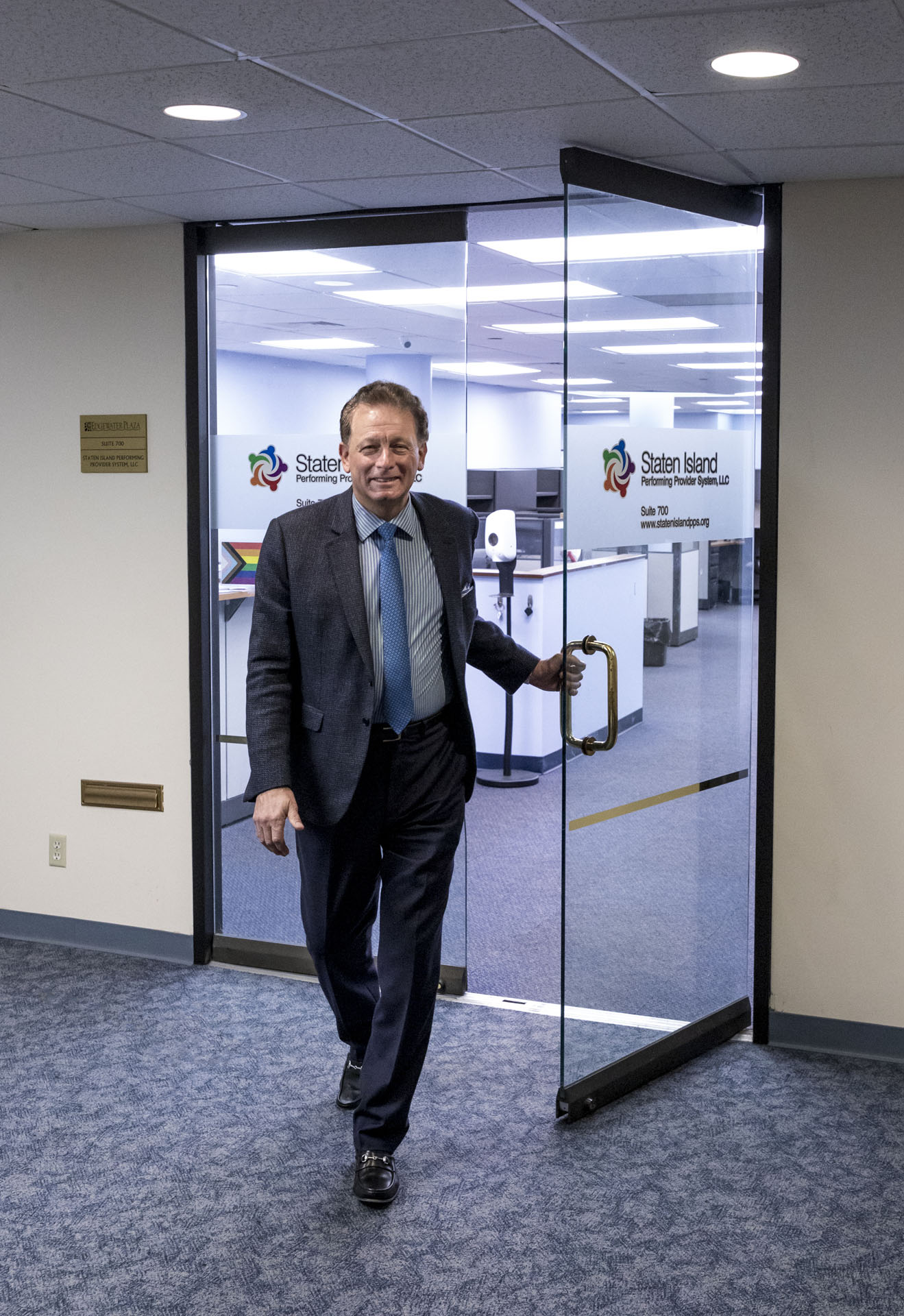IN SEVEN SHORT YEARS, THIS INTEGRATED HEALTHCARE NETWORK HAS COMPLETELY REDEFINED HOW THE BOROUGH’S HEALTHCARE DELIVERY SYSTEM VIEWS POPULATION HEALTH, AND IMPACTED TENS OF THOUSANDS OF LIVES AND ACCORDING TO ITS EXECUTIVE DIRECTOR, THE WORK HAS ONLY JUST BEGUN
BY AMANDA McCOY • PHOTOS BY AMESSE PHOTOGRAPHY
In 2014, 6.5 million New Yorkers were enrolled in Medicaid, the second highest number in the country behind California. In terms of quality metrics, the Empire State was ranked 45 out of 50, and it was the most expensive state in the country in cost per patient. One year later, in an effort to improve the Medicaid outcomes, the federal government accepted New York State’s Delivery System Reform Incentive Payment Program (DSRIP), a waiver-based initiative that incentivizes hospitals and other providers to reform their hospital delivery systems. New York State’s program launched in the spring of 2015, and 25 Performance Provider Systems (PPS) were formed throughout the state to implement this initiative in all areas with Medicaid populations including Staten Island.

“The U.S. has the costliest healthcare system in the world,” explained Joseph Conte, PhD, CPHQ, the executive director of Staten Island PPS (SIPPS). “We have an amazing system with some of the best physicians in the world, but there are a lot of bread-and-butter things we don’t do well. DSRIP was focused not on trying to tackle the complex areas in which we excel, like implants and neurosurgery, but on getting back to the basics, improving quality and reducing cost.”
In New York, a five-year funding cycle was created, and more than $6 billion in payments were available for performance based programs based on predefined results in system transformation, clinical management, and population health. The primary goal was to reduce avoidable hospital use by 25% in those five years. Each enrollee was given the autonomy to build and operate their own organization. In Staten Island, Richmond University Medical Center and Northwell Health/Staten Island University Hospital were co-parents of the endeavor, and they chose Dr. Conte, a Staten Island native and revered quality care professional with 35 years of experience in healthcare, to lead the organization.
Dr. Conte then examined the herculean task upon him: how does one restructure an entire system to incentivize healthcare providers to shift from a volume-based model to one of value, and to provide care and support for people long before they step foot inside a hospital?
“Our health system is so expensive because we are a volumebased model,” explained Dr. Conte. “We pay people for producing a unit of service rather than an outcome, which creates a ‘move them in and out’ mindset. I’ve worked in all five boroughs, L.I., and traveled around the world and to many states, and our doctors are as good as anyone. They understood the medical part, but they needed to understand the focus on population health. Staten Island is a family-oriented community; if you want to make a change, you have to make a change for the entire unit.”

Building a community of trust was a pillar of SIPPS’ initiative. Dr. Conte and his team, which was hand-selected based on each individual’s expertise in key areas, pinpointed and began to address social determinants of health in communities throughout the borough. “Those on Medicaid are generally affected by disparities,” he said. “Your ZIP code has more to do with your life expectancy than your genetics or access to care. Some studies suggest that 80% of your medical outcomes are more associated with where you live than the quality of care you receive. If someone can’t feed their family or doesn’t have access to adequate housing or education, health is intimately connected with all of those factors.”
The team used hyper-specific methods like geo-tracking and hotspotting to identify neighborhoods in need, and they partnered with dozens of community organizations to reach those individuals, establish trust, and address factors like hunger, addiction, inadequate housing, and mental health. In 2018, SIPPS launched a Social Determinants of Health screening tool, WeSource, so healthcare providers could screen patients for social needs and make referrals to local social service providers when necessary.
Another significant piece of the puzzle was addressing the lack of social/community health workers, from home health aides to peer recovery advocates. The team saw an opportunity not only to fill this crucial gap, but to provide the resources for fruitful and fulfilling careers. Through training programs and scholarships, SIPPS has graduated hundreds of community health professionals.
“We reached into high schools over the summer and created a program for community health aides,” continued Dr. Conte. “The kids got experience working in the hospitals and other health organizations. They were amazing, and the partners were over the moon with their enthusiasm and excitement. Half of the participants were uncertain about going to college, and now they want to go. This is gratifying and personal.”

Seven years after its formation, SIPPS has met and exceeded its initial goals. One of only three New York PPSs still in operation, SIPPS has morphed into a self-sustaining organization, attracting grants from dozens of groups, including the New York State Health Foundation, Cabrini, and Anthem National Medicaid Company. SIPPS is determined to improve the quality of life for the 180,000 Staten Islanders on Medicaid or uninsured; hospitals have seen a return on their investment. As of 2020, the borough saw a 17% reduction in hospital readmissions, a 23% decline in nursing home transfers to hospitals, and an astounding 36% reduction in overdose deaths, prior to the unfortunate spike from the pandemic. In a borough that was once the epicenter of the city’s opioid crisis, SIPPS has been so successful in its addiction outreach initiatives that it recently received a $4 million investment to launch “Hotspotting the Opioid Crisis,” a data-driven program designed to provide high-risk individuals with peer-centered, recovery-focused care. The investment was funded both by Northwell Health and by a $3 million grant from the Secure Future Project.
“What is amazing about this program is that it presents a road map for a real strategy to beat this epidemic,” said Max Rose, former congressman and senior advisor to the Secure Future Project. “We use predictive analytics to identify who the high-risk individuals are before they overdose, not after. There’s never been anything like this done in the world, and the fact that it’s happening in Staten Island is significant. If it weren’t for the foundation that SIPPS built, we could not have gotten the partners we need to the table.”
Dr. Conte and his team have published six papers in peer review journals over the past five years, including a recent paper in the Journal of Substance Abuse, in hopes to inspire and educate other programs and networks to adopt a community-centric approach to healthcare transformation.

“It’s easy to overlook what tremendous value SIPPS has brought to the community, from being able to fund critical programs and help people to being able to put people to work,” added Brahim Ardolic, MD, executive director at SIUH. “It’s one thing to do this in an environment where there’s a massive amount of federal funding, but it’s another to be able to maintain and continue this vision. We are going to see thousands of lives change in Staten Island over the next few years.”
Staten Island Performing Provider System
1 Edgewater Plaza, Suite 700 917.830.1145 / statenislandpps.org
